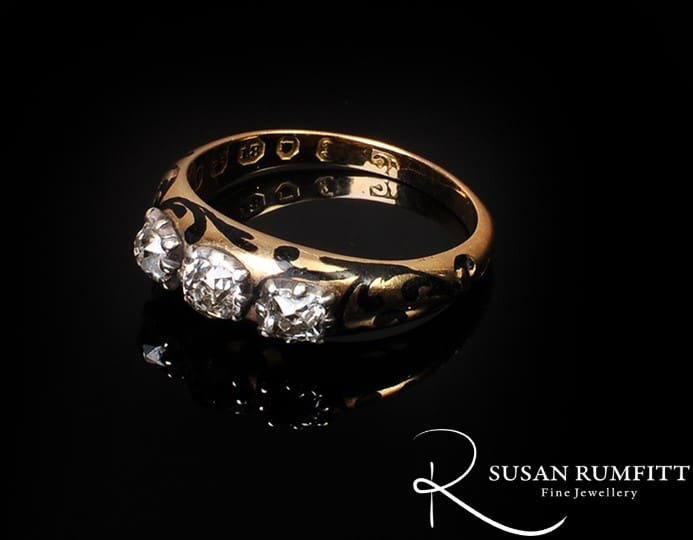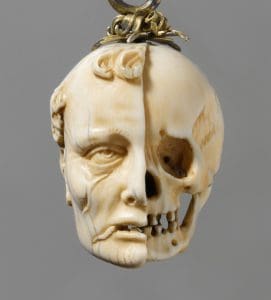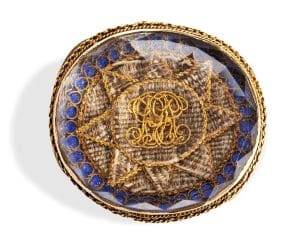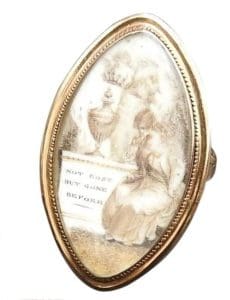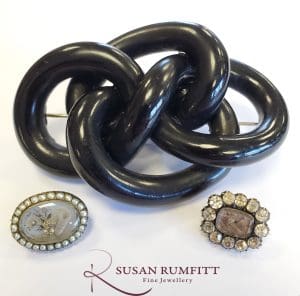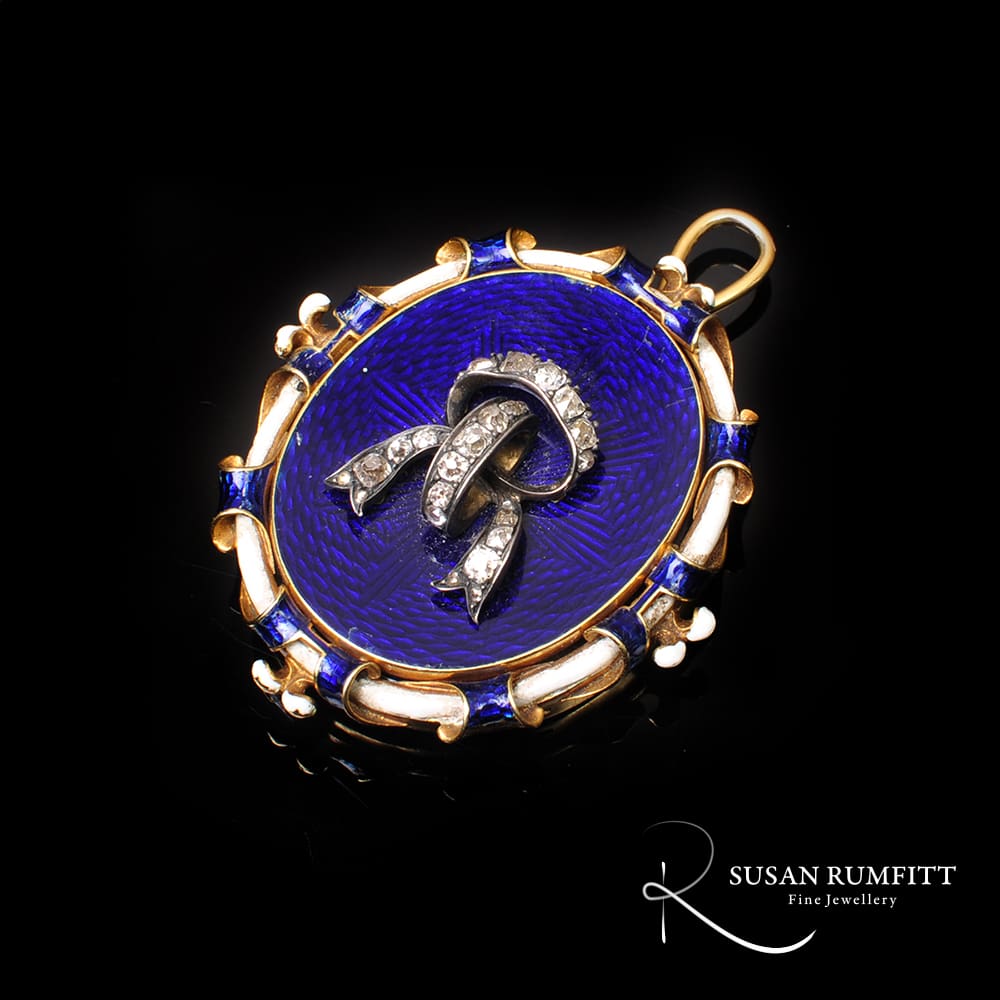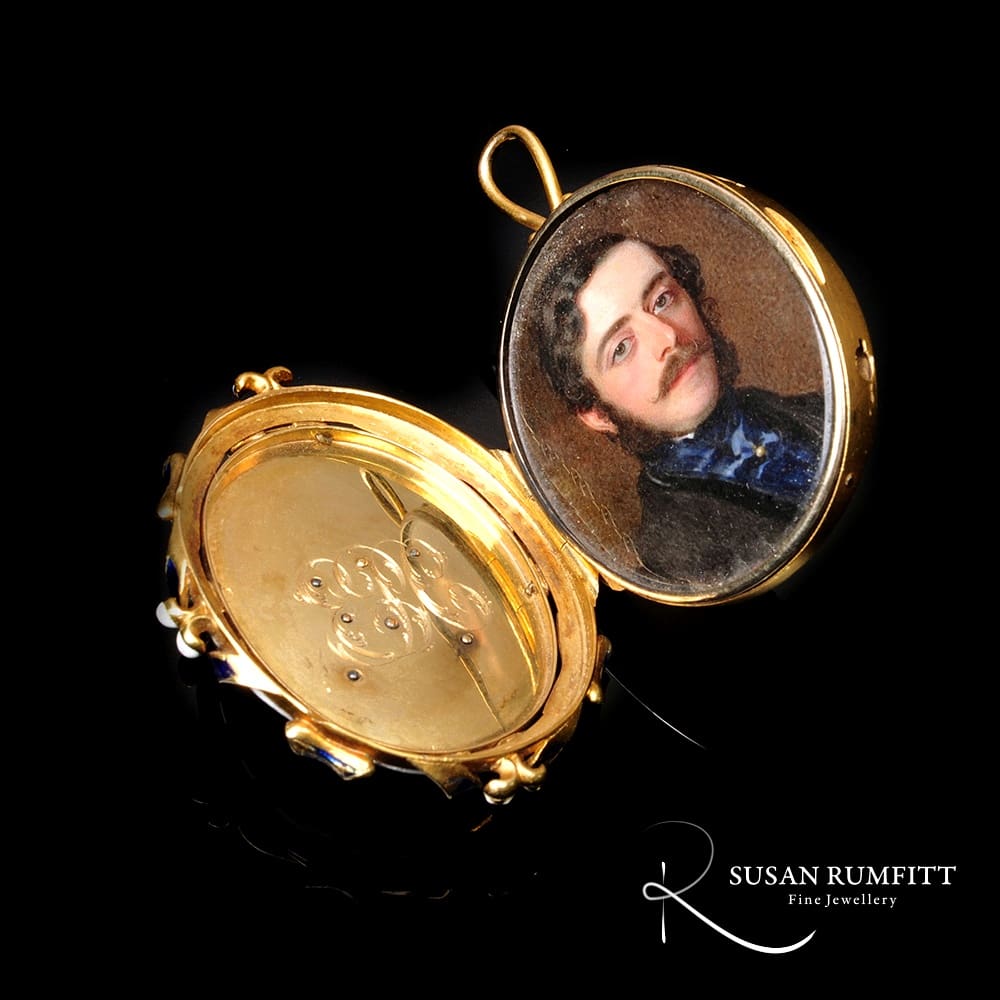As the nights draw in and Halloween approaches, we look at one of the more macabre aspects of antique jewellery.
In the beginning
From ancient times jewellery has been used as an amuletic device to protect the wearer from the ever-present threat of death, disease, and disaster. However, towards the end of the 14th and 17th centuries the symbols of mortality started being represented in jewellery as a reminder of death, rather than to ward off its inevitable approach. Enamelled skulls, skeletons, and coffins encouraged the wearer to ‘remember you will die’ and so to cherish the fleeting moments and live a pious life before your judgement day arrives. Rather macabre to look at, memento mori jewels are nevertheless highly collectible and sought after pieces due to their rarity and age.
Stuart Crystal Slide, Circa 1700 – Source Dore and Rees
Stuart Crystals
After the execution of King Charles I in 1639, Stuart Crystal mourning the King were used to discreetly express grief and communicate continuing fidelity between loyal supporters. The jewels made of flat topped, bevelled edged rock crystal over a miniature portrait or lock of the King’s hair with a cypher or symbol such as a crown, in gold wire set in plain gold or enamel settings.
By the restoration of Charles II the wearing and giving of memorial jewellery, in particular rings, became a fashion throughout high society, irrespective of previous political alliance. Whilst still including silk or hairwork with gold wire decoration under rock crystal the pieces became more personalised with inscriptions on the inside or back of the pieces and the traditional graphic symbols of mortality returning.
When Samuel Peyps died in 1703, it was so common for remembrance jewellery to be given out at a funeral that Peyps left provision for 127 rings to be made and distributed on his demise. Whilst the style changed with the fashions through the mid 1700’s, mourning jewellery remained popular as ever.
Sentimentality and Romanticism
In the second half of the 18th century sentimentality rose and the style changed from prosaic skulls in favour of allegorical symbols, seed pearl frames, and classical references. Mourning rings, pendants, and lockets featured enamel or sepia miniature scenes or portraits in marquise, oval, or octagonal panels. Whilst some motifs used were unambiguous, such as tombs, urns, weeping willows, and swooning ladies, many more were simultaneously found in jewellery designed as a love token. Thus, flaming or entwined hearts, cherubs, anchors, arrows, faithful dogs, and the universal panel of hairwork were found on pieces signifying attachments before and after death.
Romanticism came to full bloom from the end of the 18th and well into the 19th century and many pieces could have been used as tokens of love or mourning and may well have been used as one, and then the other. There are some elements however, that were only for mourning, black enamel, especially on rings with mottos, were only ever used for mourning as was jet.
Sepia Georgian Mourning Ring – Source Dore and Rees
Victorian mourning
Declared the ornament to mourn the death of Edward IV, jet’s popularity grew as rules surrounding mourning and women’s dresses simultaneously increased in rigidity and volume. By the time Queen Victoria plunged herself and society into decades of mourning women wore voluminous crinoline dresses and large and imposing jewellery was needed to set off the outfit. Jet, being light in weight but dark in colour, was perfect for the years of deep mourning the average Victorian woman was required to fulfil.
Mass production and the introduction of the Hallmarking Act produced a flood of low-grade gold alloy and black enamelled jewellery, often with a panel for hairwork and the generic phrase ‘In Memory Of’ for the growing middle classes who were eager to imitate the fine brooch, lockets, and pendants of high society. However, by the time Queen Victoria grudgingly agreed to relax her strict mourning the public relief was palpable and by her death in 1901 fashion was eagerly leaving mourning behind.
Susan Rumfitt Fine Jewellery Gallery Collection
Our Harrogate gallery features a fantastic selection of antique, vintage, and contemporary pieces, to browse the full collection please Click Here
A Victorian Blue Enamel and Diamond Locket with Miniature Portrait
A beautiful blue guilloche enamel oval locket, enhanced by a border of white enamel with blue enamel ribbon decoration and surmounted with a bow motif set with old cut diamonds. This impressive locket opens to reveal a fine hand painted miniature of a handsome gentleman with engraved initials opposite and may have been given as a token of love or affection, or been cherished in remembrance of a departed loved one. The gently curved form of the locket suggests that it was once the clasp of a magnificent bracelet but was treasured highly enough to be converted into pendant form. An exquisite sentimental piece.
